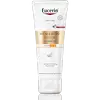What's inside
What's inside
 Key Ingredients
Key Ingredients

 Benefits
Benefits

 Concerns
Concerns

 Ingredients Side-by-side
Ingredients Side-by-side

Glycerin
HumectantUrea
BufferingGlyceryl Stearate
EmollientDibutyl Adipate
EmollientStearyl Alcohol
EmollientDicaprylyl Ether
EmollientCetearyl Alcohol
EmollientSodium Lactate
BufferingTapioca Starch
Glyceryl Stearate Se
EmulsifyingLactic Acid
BufferingSodium PCA
HumectantArginine Hcl
Skin ConditioningGlycine
BufferingAlanine
MaskingCarnitine
CleansingHelianthus Annuus Seed Oil
EmollientDimethicone
EmollientXanthan Gum
EmulsifyingPentylene Glycol
Skin ConditioningPhenoxyethanol
PreservativeSodium Cetearyl Sulfate
CleansingGlycerin, Urea, Glyceryl Stearate, Dibutyl Adipate, Stearyl Alcohol, Dicaprylyl Ether, Cetearyl Alcohol, Sodium Lactate, Tapioca Starch, Glyceryl Stearate Se, Lactic Acid, Sodium PCA, Arginine Hcl, Glycine, Alanine, Carnitine, Helianthus Annuus Seed Oil, Dimethicone, Xanthan Gum, Pentylene Glycol, Phenoxyethanol, Sodium Cetearyl Sulfate
Water
Skin ConditioningCetearyl Alcohol
EmollientAlcohol Denat.
AntimicrobialButyl Methoxydibenzoylmethane
UV AbsorberGlycerin
HumectantC12-15 Alkyl Benzoate
AntimicrobialCocoglycerides
EmollientButylene Glycol Dicaprylate/Dicaprate
EmollientBis-Ethylhexyloxyphenol Methoxyphenyl Triazine
Skin ConditioningDibutyl Adipate
EmollientEthylhexyl Salicylate
UV AbsorberEthylhexyl Triazone
UV AbsorberGlyceryl Stearate
EmollientButyrospermum Parkii Butter
Skin ConditioningDiethylamino Hydroxybenzoyl Hexyl Benzoate
UV FilterPhenylbenzimidazole Sulfonic Acid
UV AbsorberIsobutylamido Thiazolyl Resorcinol
BleachingSodium Hyaluronate
HumectantArctium Lappa Fruit Extract
AntioxidantTapioca Starch
Stearyl Alcohol
EmollientCaprylyl Glycol
EmollientSodium Stearoyl Glutamate
CleansingSodium Hydroxide
BufferingXanthan Gum
EmulsifyingSodium Chloride
MaskingPentaerythrityl Tetra-Di-T-Butyl Hydroxyhydrocinnamate
AntioxidantTrisodium EDTA
Phenoxyethanol
PreservativeParfum
MaskingWater, Cetearyl Alcohol, Alcohol Denat., Butyl Methoxydibenzoylmethane, Glycerin, C12-15 Alkyl Benzoate, Cocoglycerides, Butylene Glycol Dicaprylate/Dicaprate, Bis-Ethylhexyloxyphenol Methoxyphenyl Triazine, Dibutyl Adipate, Ethylhexyl Salicylate, Ethylhexyl Triazone, Glyceryl Stearate, Butyrospermum Parkii Butter, Diethylamino Hydroxybenzoyl Hexyl Benzoate, Phenylbenzimidazole Sulfonic Acid, Isobutylamido Thiazolyl Resorcinol, Sodium Hyaluronate, Arctium Lappa Fruit Extract, Tapioca Starch, Stearyl Alcohol, Caprylyl Glycol, Sodium Stearoyl Glutamate, Sodium Hydroxide, Xanthan Gum, Sodium Chloride, Pentaerythrityl Tetra-Di-T-Butyl Hydroxyhydrocinnamate, Trisodium EDTA, Phenoxyethanol, Parfum
Ingredients Explained
These ingredients are found in both products.
Ingredients higher up in an ingredient list are typically present in a larger amount.
Cetearyl alcohol is a mixture of two fatty alcohols: cetyl alcohol and stearyl alcohol. It is mainly used as an emulsifier. Emulsifiers help prevent the separation of oils and products. Due to its composition, it can also be used to thicken a product or help create foam.
Cetearyl alcohol is an emollient. Emollients help soothe and hydrate the skin by trapping moisture.
Studies show Cetearyl alcohol is non-toxic and non-irritating. The FDA allows products labeled "alcohol-free" to have fatty alcohols.
This ingredient is usually derived from plant oils such as palm, vegetable, or coconut oils. There is debate on whether this ingredient will cause acne.
Due to the fatty acid base, this ingredient may not be Malassezia folliculitis safe.
Learn more about Cetearyl AlcoholDibutyl Adipate is an emollient and solvent. It is created from butyl alcohol and adipic acid.
As a solvent, Dibutyl Adipate helps mix and disperse ingredients evenly.
Dibutyl Adipate is soluble in water and organic solvents. It does not absorb UV rays.
Learn more about Dibutyl AdipateGlycerin is already naturally found in your skin. It helps moisturize and protect your skin.
A study from 2016 found glycerin to be more effective as a humectant than AHAs and hyaluronic acid.
As a humectant, it helps the skin stay hydrated by pulling moisture to your skin. The low molecular weight of glycerin allows it to pull moisture into the deeper layers of your skin.
Hydrated skin improves your skin barrier; Your skin barrier helps protect against irritants and bacteria.
Glycerin has also been found to have antimicrobial and antiviral properties. Due to these properties, glycerin is often used in wound and burn treatments.
In cosmetics, glycerin is usually derived from plants such as soybean or palm. However, it can also be sourced from animals, such as tallow or animal fat.
This ingredient is organic, colorless, odorless, and non-toxic.
Glycerin is the name for this ingredient in American English. British English uses Glycerol/Glycerine.
Learn more about GlycerinGlyceryl Stearate is a mix of glycerin and stearic acid.
It is used to stabilize the mixing of water and oil ingredients. By preventing these ingredients from separating, it can help elongate shelf life. It can also help thicken the product's texture.
As an emollient, it helps soften skin and supports barrier-replenishing ingredients.
In cosmetics, Glyceryl Stearate is often made from vegetable oils or synthetically produced.
This ingredient may not be fungal-acne safe
Fun fact: The human body also creates Glyceryl Stearate naturally.
Learn more about Glyceryl StearatePhenoxyethanol is a preservative that has germicide, antimicrobial, and aromatic properties. Studies show that phenoxyethanol can prevent microbial growth. By itself, it has a scent that is similar to that of a rose.
It's often used in formulations along with Caprylyl Glycol to preserve the shelf life of products.
Stearyl Alcohol is a type of fatty alcohol from stearic acid. It is a white, waxy compound used to emulsify ingredients.
Fatty Alcohols are most often used as an emollient or to thicken a product. Emollients help soothe and hydrate the skin by trapping moisture.
They are usually derived from natural fats and oils and therefore do not have the same drying or irritating effect as solvent alcohols. FDA allows products labeled "alcohol-free" to have fatty alcohols.
Learn more about Stearyl AlcoholTapioca starch is a thickening agent and is made from the cassava root, also known as yucca.
According to a manufacturer, it is an excellent talc replacement.
It is gluten-free.
Learn more about Tapioca StarchXanthan gum is used as a stabilizer and thickener within cosmetic products. It helps give products a sticky, thick feeling - preventing them from being too runny.
On the technical side of things, xanthan gum is a polysaccharide - a combination consisting of multiple sugar molecules bonded together.
Xanthan gum is a pretty common and great ingredient. It is a natural, non-toxic, non-irritating ingredient that is also commonly used in food products.
Learn more about Xanthan Gum